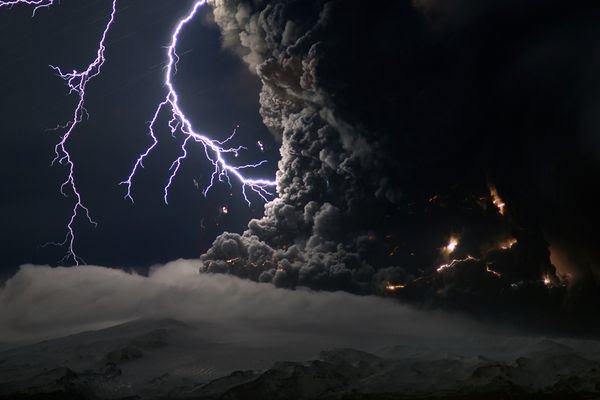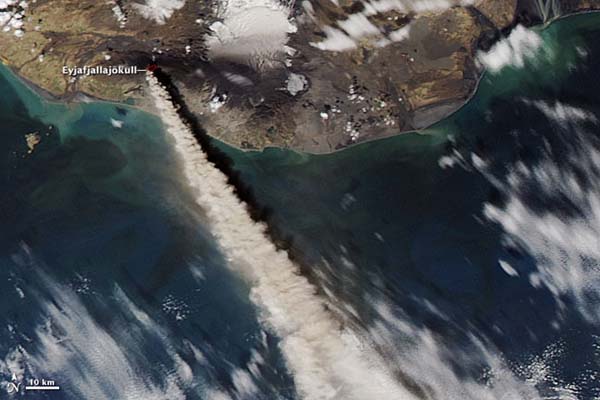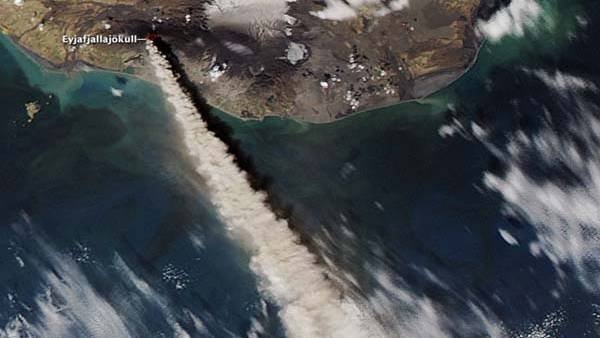Iceland Volcano Ash Plume Electrified
Source: livescience.com

The billowing plume of ash that spewed from Iceland’s Eyjafjallajakull volcano and spread across Europe in April carried with it a significant electric charge, new research reveals.
Eyjafjallajakull first began pumping volcanic ash into the atmosphere on March 20. The spread of the plume across Europe hampered air travel for days and created fiery red sunsets.

© Anthony Ayiomamitis
Shortly after the volcano’s active eruption phase began in mid-April, the U.K. Met Office contacted Joseph Ulanowski from the Science and Technology Research Institute at the University of Hertfordshire, who last year, together with Giles Harrison from the Department of Meteorology at the University of Reading, had developed a specialized weather balloon that could assess the location and composition of the volcanic ash clouds.

The plume of ash and steam rising from the Eyjafjallajökull volcano reached 17,000 to 20,000 feet (5 to 6 kilometers) into the atmosphere on May 10, 2010, when the Moderate Resolution Imaging Spectroradiometer (MODIS) on NASA’s Aqua satellite captured this image. Credit: Jeff Schmaltz, MODIS Rapid Response Team at NASA GSFC
Their balloons, originally designed and used to study the properties of desert dust clouds, are able to assess not only the size of particles suspended in the atmosphere - such as volcanic ash - but also the electric charge present, which can be important to know when evaluating a plume’s threat to aircraft.
"Detailed volcanic plume properties, such as the particle size, concentration and charge found by our weather balloon are important in predicting the impact on aircraft," Harrison said.
Lightning seen in the plume from Eyjafjallajakull is also attributed to electrical charges generated in the plume from particles rubbing together.
Measurements made last year with the balloons in Kuwait and off the west coast of Africa showed clearly that desert dust could become strongly electrified aloft.
When particles in the atmosphere become charged, it can change how effectively they grow in size or are washed out by rain.
When Eyjafjallajakull erupted, a team of scientists was quickly assembled and travelled to a site near Stranraer in Scotland where a balloon was launched. The balloon detected a layer of volcanic ash about 2.5 miles (4 kilometers) above the ground, about 1,970 feet (600 meters) thick, with very abrupt upper and lower edges.
The charge detected by the balloon was deep inside the plume, not along the edges. This is contradictory to what would be expected from the normal weather-induced charging of cloud layers.
From their measurements, the researchers conclude that neither energy from the volcanic source - more than 745 miles (1,200 km) away - nor weather conditions could have been responsible for the position of the charge found by the balloon.
Article from: LiveScience.com
Also tune into:
Donald E. Scott - The Electric Sky
Wallace Thornhill - The Electric Universe
Wallace Thornhill - Proto-Saturn, The Purple Dawn of Creation & Our Strange Solar System
Rens van der Sluijs - Plasma Mythology & The Axis Mundi
Freeman - Space War, the Norway Spiral, CARE, CERN, HAARP & EISCAT






















